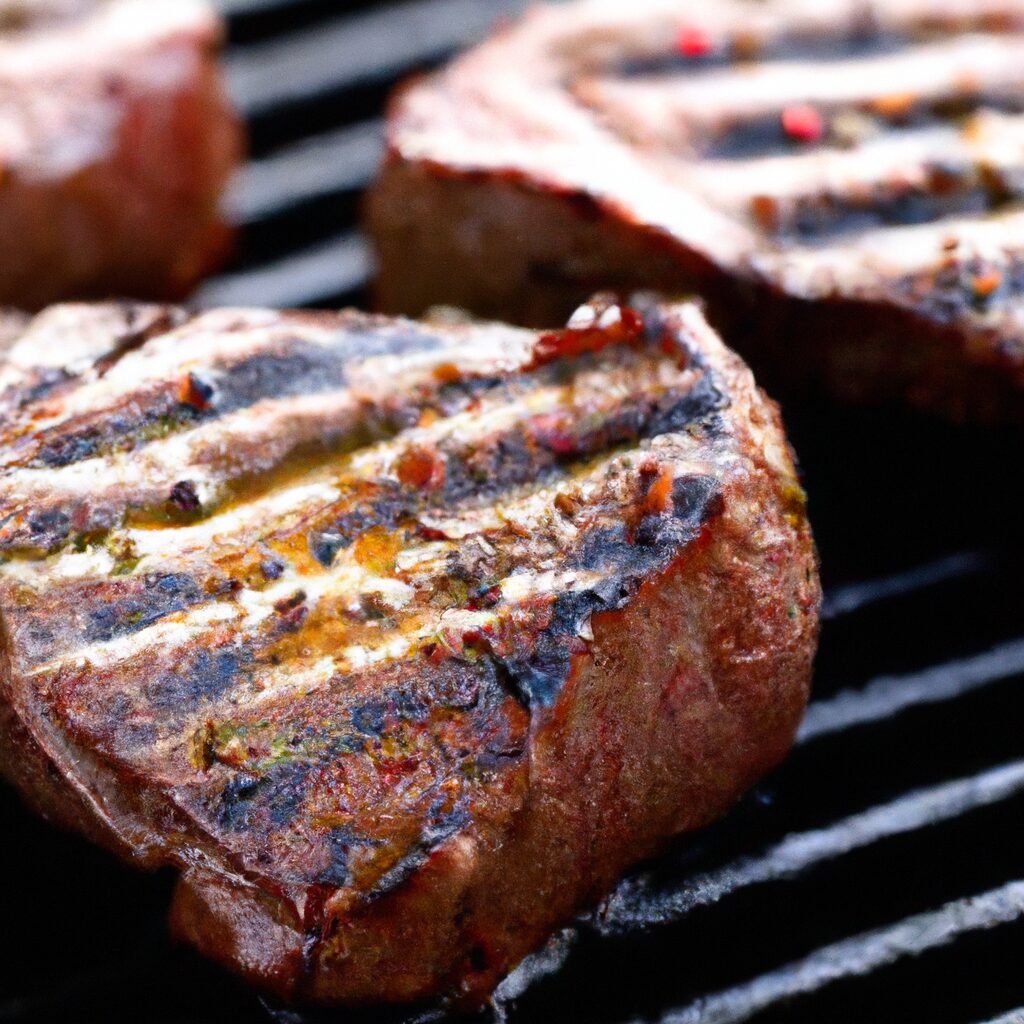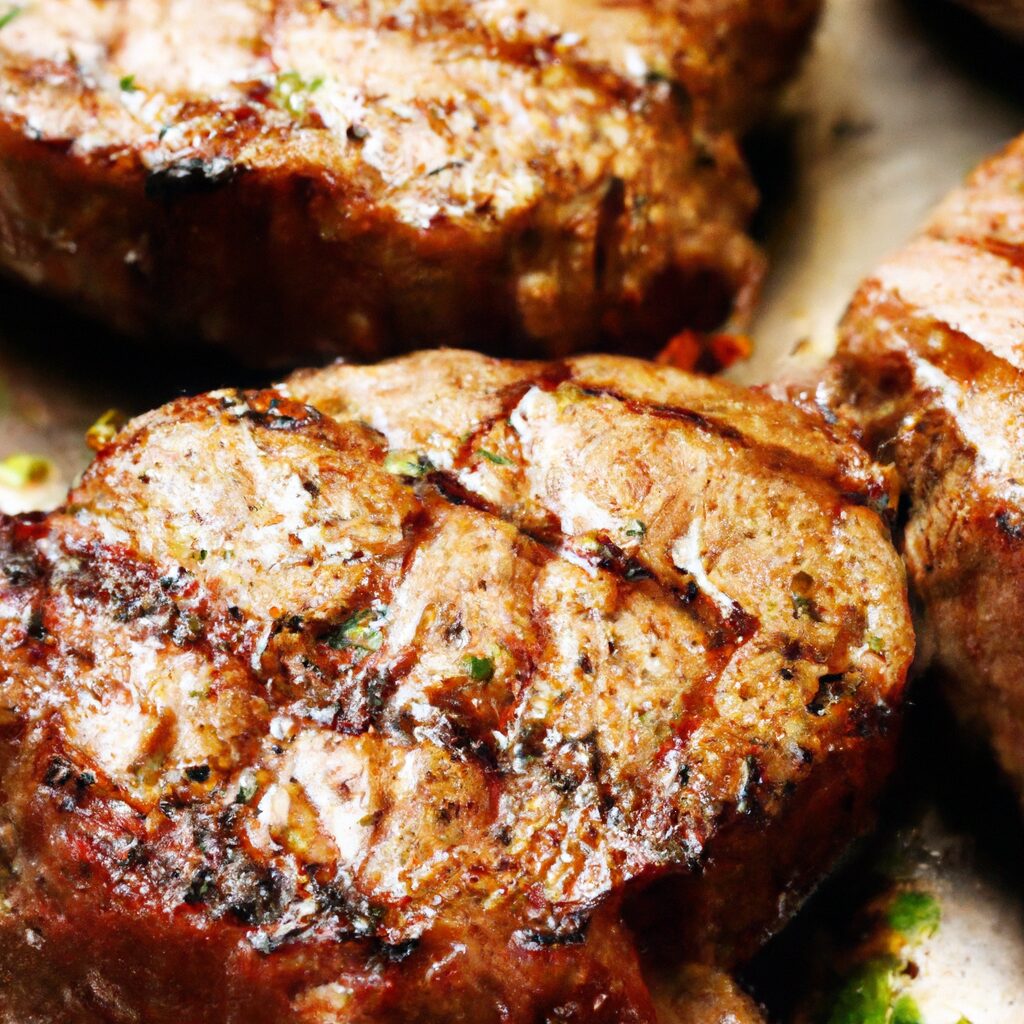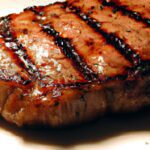
Filet mignon, often hailed as the pinnacle of steak cuts, is renowned for its tenderness and exquisite flavor. However, despite its popularity, grilling filet mignon may not be the best way to showcase its full potential.
While some may argue that it can be perfectly acceptable to grill this cut, we believe that the true star of filet mignon lies in its crust, which can only be achieved through other cooking methods. Grilling can lead to a lack of caramelization and result in a less flavorful dining experience.
In this article, we will explore why pan-searing, using a flat-top grill, or even cooking it in the oven can offer a more delectable outcome. So, if you’re a fan of filet mignon, join us as we delve into the world of cooking techniques that will truly elevate your steak game.
Reasons to Avoid Grilling Filet Mignon
Filet mignon, often regarded as the epitome of luxury when it comes to beef cuts, is known for its unparalleled tenderness and exquisite flavor. However, despite its popularity, there are certain reasons why grilling filet mignon may not be the best choice.
In this article, we will explore the drawbacks of grilling filet mignon and discuss alternative cooking methods that can result in a more flavorful and moist steak.
Leaner Cuts and Grilling
When it comes to grilling, leaner cuts of meat often suffer from becoming tough and dry. The high heat deteriorates the texture, leaving you with a less enjoyable eating experience. This is why it is generally advised to avoid grilling lean meats like pork chops.
While filet mignon is a relatively lean cut, it can still withstand the high heat of grilling. However, grilling filet mignon may not be the optimal choice because it misses out on one crucial aspect: the crust.
Missing Out on the Crust
One of the most delightful aspects of cooking filet mignon is the opportunity to create a delectable crust. By caramelizing the surface of the steak, you enhance its flavor profile and add a delightful texture.
Unfortunately, grilling filet mignon on an open flame doesn’t provide the even heat distribution necessary for proper caramelization. Instead, you end up with grill marks but miss out on the full potential of the crust.
Why Grilled Filet Mignon is not Recommended


This image is the property of www.thedailymeal.com.
Tough and Dry Texture
Grilling filet mignon can lead to a tough and dry texture. The high heat of the grill breaks down the delicate structure of the meat, resulting in less tender bites.
This is especially true for lean cuts like filet mignon, which are more prone to becoming tough when exposed to dry heat for a prolonged time.
To fully appreciate the tenderness of filet mignon, it is best to opt for cooking methods that preserve moisture and prevent excessive drying.
Uneven Heat Distribution
Grills, especially those with open flames, often have uneven heat distribution. This can lead to inconsistent cooking, with some parts of the filet mignon being overcooked while others remain undercooked.
Achieving the perfect level of doneness becomes a challenge when grilling, as you have less control over the heat source. For a more precise and evenly cooked filet mignon, alternative cooking methods are worth considering.
Alternative Cooking Methods
Using a Flat-Top Grill or Griddle
If you still crave the caramelization and crust that grilling offers while cooking filet mignon, consider using a flat-top grill or griddle instead.
These cooking surfaces provide more even heat distribution, allowing for the desired caramelization without sacrificing moisture.
While you won’t be able to baste the filet in the pan like with pan-searing, the flat-top grill can still deliver a deliciously flavorful steak.
Cooking Filet Mignon in the Oven
Another alternative to grilling filet mignon is to cook it in the oven. There are several methods you can use, depending on your preference.
The broiler can be an excellent choice, as it offers some of the benefits of grilling without uneven heating. The broiler can help create a mouthwatering crust on the filet mignon.
Alternatively, you can cook the filet in a regular oven, but it is advised to pan-sear it first to achieve the desired caramelization and then use the oven to finish cooking.
Benefits of Pan-Searing Filet Mignon
Caramelization for Extra Flavor
Pan-searing filet mignon is considered one of the best cooking methods for this tender cut of meat. It allows for optimal caramelization, resulting in a rich, flavorful crust.
By searing the filet in a hot pan, you create Maillard reactions, which enhance the taste and aroma of the steak.
The beautiful golden-brown crust achieved through pan-searing adds an extra layer of complexity to the overall flavor profile.
Preserving Moisture
One of the key benefits of pan-searing filet mignon is its ability to preserve moisture. The hot pan quickly seals the exterior of the steak, locking in its natural juices and preventing excessive drying.
This ensures that each bite of the filet mignon is tender and succulent, providing a truly enjoyable dining experience.
Pan-searing offers better control over the cooking process, allowing you to achieve the desired level of doneness while retaining maximum moisture.
Knowing What Works: Filet Mignon Preparation


Explore Different Cooking Methods
To truly appreciate the versatility of filet mignon, it is essential to explore different cooking methods. While grilling is a popular choice for many cuts of meat, it may not always be the ideal option for filet mignon.
By experimenting with alternative methods such as pan-searing, using a flat-top grill or griddle, or cooking in the oven, you can discover the cooking technique that best suits your preferences and brings out the best flavors of this prized cut.
Understanding the Best Technique
While there are several ways to cook filet mignon, pan-searing is often hailed as the optimal technique. It allows for the perfect balance between flavor, texture, and moisture. Pan-searing allows you to achieve the desired caramelization while preserving the tenderness of the meat.
By understanding the technique and mastering the art of pan-searing, you can consistently create a delicious filet mignon that will impress even the most discerning palates.
Other Ways to Enjoy Filet Mignon
Considering Broiling
For those who seek the flavor and texture of a grilled crust without actually grilling, broiling can be an excellent option. Broiling filet mignon in the oven under high heat allows for the development of a flavorful crust similar to grilling.
The broiler provides consistent heat distribution, ensuring that the filet mignon cooks evenly. It’s a versatile method that can produce mouthwatering results for steak enthusiasts.
Using the Oven for Finishing
If you prefer a combination of cooking methods, you can opt to finish your filet mignon in the oven. After pan-searing the steak to achieve the desired caramelization, transferring it to the oven helps ensure even doneness.
This method allows for precise control over the cooking process while retaining the rich flavors and moist texture that filet mignon is known for.
Superior Cooking Methods for Filet Mignon


Pan-Searing as the Optimal Technique
While there may be various ways to cook filet mignon, pan-searing stands out as the superior technique. It combines the benefits of caramelization, moisture preservation, and precise control over the cooking process. When done correctly, pan-seared filet mignon offers a perfect balance of tenderness, juiciness, and flavor that is hard to rival.
Creating a Delicious Meal
By choosing pan-searing or other alternative cooking methods, you can elevate your filet mignon dining experience. The crust created through proper caramelization enhances the overall flavors of the steak.
The improved moisture retention ensures that each bite is a succulent delight. With the right technique and a little bit of culinary finesse, you can create a memorable meal that showcases the exceptional qualities of filet mignon.
Tenderize and Enhance Filet Mignon
Choosing the Right Cooking Method
The choice of cooking method can significantly impact the tenderness and flavor of filet mignon. While grilling may not be the ideal option, considering alternative methods like pan-searing or broiling can enhance the overall enjoyment of this prized cut.
It is important to select a cooking technique that both caramelizes the surface and maintains moisture within the meat, resulting in a tender and flavorful filet mignon.
Getting the Best Flavors
To truly savor the delicate flavor of filet mignon, it is crucial to employ the right cooking method. Each technique offers its unique advantages in terms of flavor development. By selecting the cooking method that aligns with your taste preferences, you can ensure that every bite of filet mignon is a burst of indulgence.
Grilling vs. Pan-Searing: Pros and Cons
Comparing Grilling and Pan-Searing Techniques
Grilling and pan-searing are two common techniques for cooking filet mignon, each with its own set of pros and cons.
Grilling offers the opportunity to infuse the steak with a smoky flavor and distinctive grill marks. However, it can lead to a drier texture and uneven heat distribution.
On the other hand, pan-searing provides better moisture retention and creates a flavorful crust. It allows for precise control over the cooking process but may lack the distinct smokiness associated with grilling.
Advantages and Disadvantages
Grilling filet mignon has the advantage of imparting a smoky flavor and achieving visually appealing grill marks. However, it can be challenging to cook the steak, potentially resulting in overcooked or undercooked portions.
Pan-searing, on the other hand, preserves moisture and offers better control over the cooking process. The crust created through pan-searing enhances flavor but may lack the smoky notes that grilling provides.
Ultimately, the choice between grilling and pan-searing depends on personal preferences and desired outcomes.
Conclusion
While filet mignon is a highly desirable and tender cut of beef, grilling may not be the best method to maximize its flavor potential.
The lean nature of filet mignon makes it susceptible to becoming tough and dry when exposed to high heat for extended periods.
Moreover, grilling fails to achieve the desired caramelization and crust that is essential for unlocking the steak’s full flavor profile.
Fortunately, there are alternative cooking methods that can take your filet mignon experience to new heights.
Whether you choose to pan-sear, use a flat-top grill or griddle, or explore oven cooking techniques, there are plenty of options that preserve moisture, enhance flavor, and result in a perfectly cooked steak.
By understanding the advantages and disadvantages of each method, you can make an informed decision and create a memorable meal with filet mignon as the star.
So, think twice before firing up the grill for your next filet mignon. Step outside the comfort zone of traditional grilling and explore the endless possibilities of alternative cooking methods. Your taste buds will thank you for it.
The Ultimate Guide To Grilled Asparagus Recipes
What Vegetarian Recipes Should You Try?
What Are The Best Grilling Recipes For Camping?







